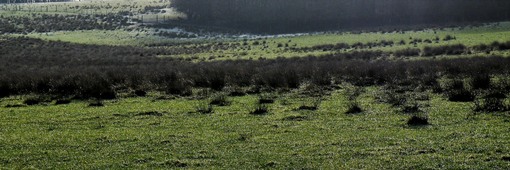

Biodiversity
Action
Plan
Rush Pasture Conservation:
Rush Pasture sites in Barnsley are small, localised and fragmented. Locally Rush Pasture is important especially for the nesting and foraging waders such as Curlew, Lapwing and Snipe.
Causes of loss and decline of Rush Pasture for wildlife
- Agricultural intensification and increases in stocking densities have resulted in a significant loss of this habitat and decline in the populations of Lapwing, Curlew and Snipe.
- Rush pasture habitat is lost through agricultural improvements such as drainage, liming, nutrient enrichment and reseeding.
- It is also lost through woodland planting, mineral working, etc
- Over-grazing, compaction due to overstocking and heavy use, allows other plant species and scrub development to take over.
- A lack of grazing leads to rankness and scrub encroachment and lack of management can lead to dense rush taking over.
- There can also be pollution from agricultural or other runoff.
Legal Protection
Where rush pasture exists within SCA /SPA or SSSI designated areas and is included in their designation, it has legal protection, a presumption against change of use and support for its conservation.
Sites identified as Local Wildlife Sites have a presumption against planning permission for development or change of use.
However they have no protection against operations that do not require planning permission or change of use authorisation.
Agricultural work where protected species are present may commit offences under the Wildlife and Countryside Act, 1981.
Protected species include all breeding birds including in this context waders. Licences may be needed from Natural England.
Advice
RSPB: Rush Management for wildlife
Buglife: Managing rush pasture habitat
Good management practice:
- Maintaining damp conditions and avoiding drainage /drying out; maintaining rush pasture as part of a mosaic of habitat types.
- Moderate to light grazing so that the vegetation structure maintains some diversity and not be reduced to a uniformly low sward
- Ensuring appropriate cover of rushes for breeding waders; where tussocks are very sparse not enough cover is available for nesting. This usually involves using light cattle grazing.
- Maintaining open grassy areas. Where rushes become too widespread, open areas needed for feeding and foraging are lost.
- Swards are sometimes ‘topped’ in late July after chicks have fledged to help prevent the spread of rushes.
- Scrub invasion should be prevented wherever possible.
Natural England Guidance advocates an average grass height of 7 and 8cm for rush during April and May, increasing to 10 and 13cm in June to October, a quarter of the sward no more than 15cm for grass and 40cm for rushes - a diverse sward of shorter areas interspersed by taller tussocks. Areas of dense litter should be less than 25% of the total area in October.

Rush Pasture BAP priority habitat in favourable condition is denoted by:
≥ two frequent and two occasional Rush Pasture indicator species
< 10% undesirable species eg dock, nettle, thistle, ragwort, cow parsley, …
< 5% invasive trees and shrubs
< 50% non-jointed rush cover
< 30% cover of large sedge species and < 20% cover of reeds and large grasses
For breeding waders
0% scrub cover
< 40% cover of rushes and on the remainder from 5% to 60% tussocks of grass or sedge
From 5 to 15 cm sward height in April & May
From Farm Environment Plan guidance


Rush Pasture